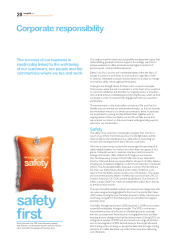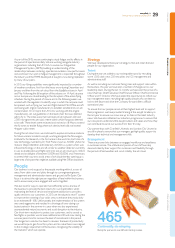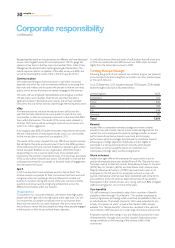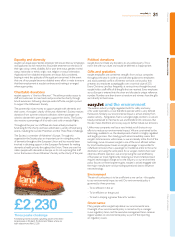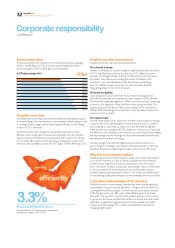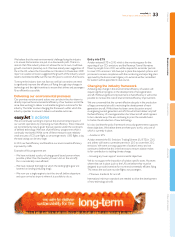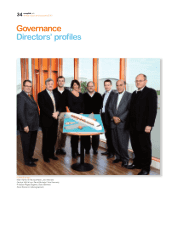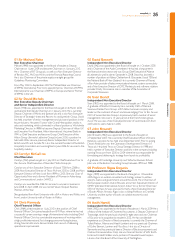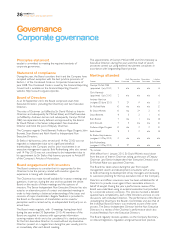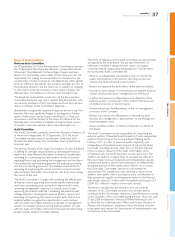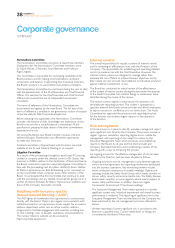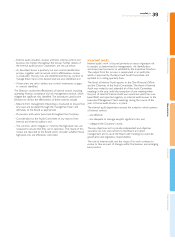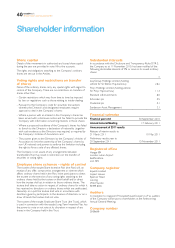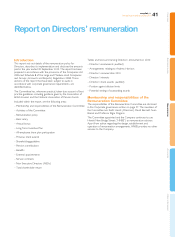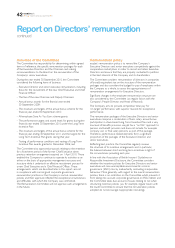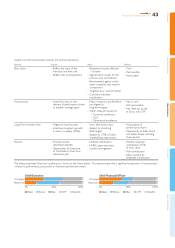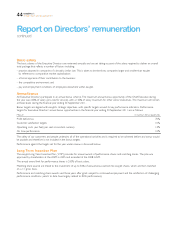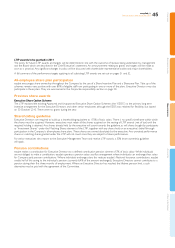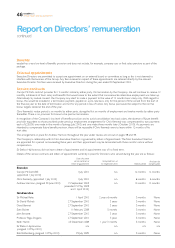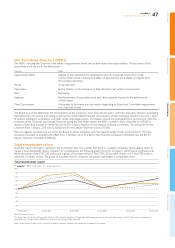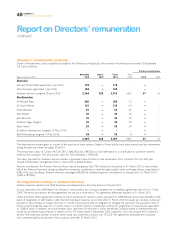EasyJet 2010 Annual Report Download - page 40
Download and view the complete annual report
Please find page 40 of the 2010 EasyJet annual report below. You can navigate through the pages in the report by either clicking on the pages listed below, or by using the keyword search tool below to find specific information within the annual report.easyJet plc
Annual report and accounts 2010
Corporate governance
continued
38
Nominations Committee
The Nominations Committee comprises at least three members.
During the year, the Nominations Committee members were
Sir David Michels (Chairman), David Bennett and Professor
Rigas Doganis.
This Committee is responsible for nominating candidates to fill
Board positions and for making recommendations on Board
composition and balance. In appointing Non Executive Directors,
the Board’s practice is to use external recruitment consultants.
The Nominations Committee has met twice during the year to deal
with the appointments of the Chief Executive and Chief Financial
Officer. The searches for the Chief Executive and Chief Financial
Officer both involved the use of independent recruitment
consultants.
The terms of reference of the Nominations Committee are
documented and agreed by the main Board. The full text of the
terms of reference is available in the governance section of easyJet’s
corporate website, http://corporate.easyJet.com.
Before selecting new appointees, the Nominations Committee
considers the balance of skills, knowledge and experience on the
Board to ensure that a suitable balance is maintained. All job
specifications prepared include details of the time commitments
expected in the role.
On joining the Board, new Board members receive a full and
tailored induction. Shareholders are offered the opportunity
to meet new Directors.
Contracts and letters of appointment with Directors are made
available at the Annual General Meeting or on request.
Litigation Committee
As a result of the proceedings brought by easyGroup IP Licensing
Limited (a company under the ultimate control of Sir Stelios Haji-
Ioannou) in 2008 in relation to the clarification of the brand licence,
the Board continues to operate a separate Litigation Committee to
deal with the proceedings and all matters related to them. Neither
Sir Stelios Haji-Ioannou nor Bob Rothenberg (as his nominee) sat
on this Committee which comprises every other Director of the
Board. It is anticipated that the Committee shall continue to exist
until the proceedings and any related circumstances giving rise to a
conflict of interest between Sir Stelios Haji-Ioannou’s interests and
those of the Company have been resolved.
Relations with investors and the
Annual General Meeting (“AGM”)
The AGM gives all shareholders the opportunity to communicate
directly with the Board. There is also regular communication with
institutional investors on key business issues. easyJet has an investor
relations department which runs an active investor relations
programme to facilitate engagement with investors including one
on one meetings, visits to easyJet’s operations and presentations.
The investor relations website can be accessed at
http://corporate.easyjet.com.
Internal control
The overall responsibility for easyJet’s systems of internal control
and for reviewing its effectiveness rests with the Directors of the
Company. The responsibility for establishing and operating detailed
control procedures lies with the Chief Executive. However, the
internal control systems are designed to manage rather than
eliminate the risk of failure to achieve business objectives and by
their nature can only provide reasonable but not absolute assurance
against material misstatement or loss.
The Board has conducted an annual review of the effectiveness
of the system of internal control during the year under the auspices
of the Audit Committee. No material failings or weaknesses were
identified during the course of this review.
The internal control regime is enhanced by the operation of a
whistleblower reporting function. The system is operated by a
specialist external third-party service provider and allows employees
to report concerns in confidence on a no names basis. The Audit
Committee has approved the processes and reporting structure
for the function and receives regular reports on the operation
of the function.
Risk management
A formal process is in place to identify, evaluate, manage and report
upon significant risks faced by the Company. The process involves a
regular, rigorous, mandatory reporting regime across middle tier
management with reporting of risks subject to review by the
Executive Management Team which produces consolidated risk
reports to the Board. As at year end the Internal Audit and
Company Secretarial functions were undertaking a review of risk
reporting with a view to enhancing the process.
An ongoing process for the effective management of risk has been
defined by the Directors and has been adopted as follows:
–Ongoing assurance and risk management is provided through the
various monitoring reviews and reporting mechanisms embedded
into the business operations. Key monitoring reviews include
those conducted continuously in weekly meetings. Operational
meetings include the Safety Audit Group which meets monthly to
discuss safety, security and environmental risks. The Safety Review
Board meets monthly, or more regularly where events require, to
review safety performance. In addition, there are regular
Commercial, Financial and IT functional meetings;
– The Executive Management Team meets quarterly to consider
significant current risks. Individual department and overall business
performance is reviewed. The reporting of significant risks to the
Executive Management Team and the Board of the Company has
been enhanced by the risk management processes referred to
above;
–Written reporting of current significant risks is provided to the
Board on a quarterly basis. Control weaknesses or failings are
considered by the Board if they arise;


